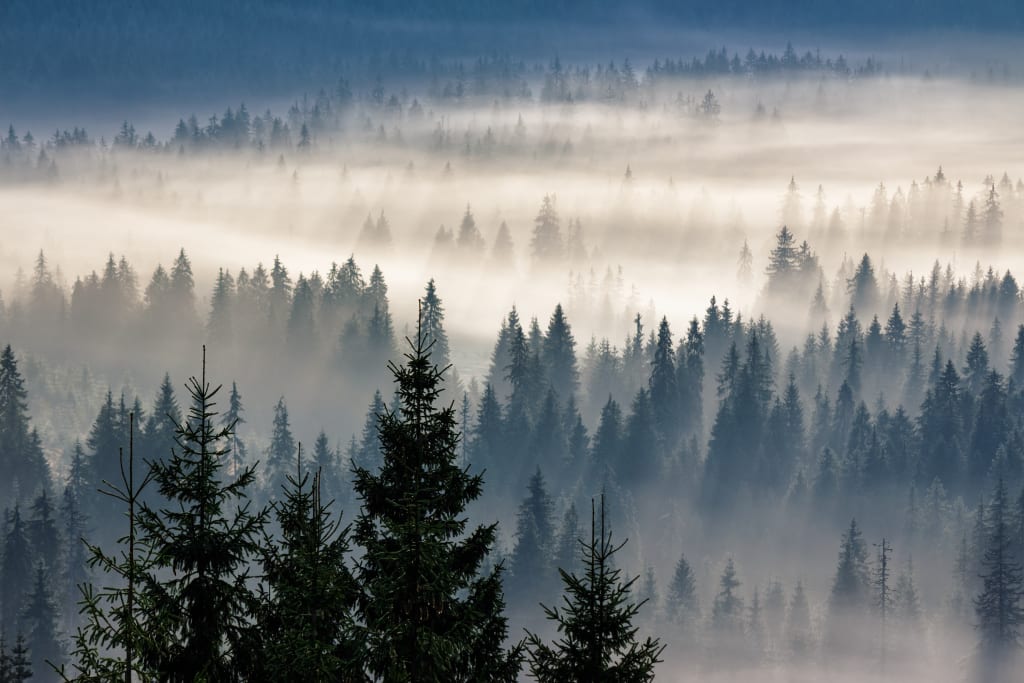The Tunguska Event:
Unraveling the Mystery of Siberia's Enigma

Siberia, a vast expanse of land, holds within its borders the secrets of an enigmatic event that unfolded over a century ago. On the 30th of June 1908, a calamity of unparalleled proportions struck deep within the East Siberian taiga, leaving a trail of devastation in its wake. This catastrophic event, known as the Tunguska Event, remains one of the most perplexing natural disasters in modern history. Despite extensive scientific investigations, the cause of this extraordinary phenomenon continues to elude us. In this blog post, we delve into the mystery of the Tunguska Event, exploring its astonishing impact and the enduring questions it raises.
The Taiga's Silent Witness
The taiga, a colossal forest that stretches across Siberia, commands a third of this vast wilderness. Encompassing an area roughly one and a half times the size of India, the taiga dominates the Siberian landscape. It was within this majestic realm of trees that the Tunguska Event unfolded, forever altering the surrounding landscape. Over 80 million trees, spread across an area of nearly a thousand square miles, were toppled, creating an apocalyptic scene reminiscent of a pocket-sized nuclear explosion. However, it is crucial to note that nuclear weapons were not yet invented at the time, and no human explosive could account for such widespread destruction.
The Quest for Answers
In 1927, Russian mineralogist Leonard Kulik ventured to the remote site near the Parkamnia Tunguska River, determined to unlock the mystery of the Tunguska Event. Armed with a team of scientists and local guides, Kulik hypothesized that a meteor strike was the only plausible explanation for this unprecedented catastrophe. His investigation seemed to support this theory initially, as the fallen trees pointed uniformly in one direction. Following this trail, the team arrived at what could only be described as Ground Zero. Yet, what Kulik discovered left him puzzled and astonished.
An Unearthly Scene
Contrary to expectations, Kulik found no impact crater at Ground Zero, nor any meteorite fragments. Strangely, the upright trees in the supposed impact zone were devoid of bark and branches. The absence of conventional evidence added to the enigma surrounding the Tunguska Event. More than a hundred years later, these perplexing observations continue to baffle scientists, raising profound questions about the nature of the event.
Global Ripples of Destruction
The effects of the Tunguska Event reverberated far beyond the Siberian wilderness. Seismic stations across Europe and Asia recorded activity resembling a mid-sized earthquake, while an air-based shockwave reached as far as Papua New Guinea and Washington D.C., 5,000 miles away. Even without sophisticated scientific equipment, people around the world witnessed the strange aftermath. Night skies were illuminated by an eerie light for several days, so intense that individuals could read newspapers and capture photographs outdoors during the nighttime. These remarkable phenomena sparked curiosity and fueled the search for answers.
Eyewitness Accounts and Scarce Casualties
Eyewitness accounts from the vicinity of Ground Zero are scarce due to the remote and sparsely populated nature of Siberia. Astonishingly, considering the magnitude of destruction, the estimated death toll stands at only three. Witnesses who found themselves near the site describe a similar sequence of events. In the early hours of June 30, 1908, a brilliant blue-white light resembling a second sun appeared high in the sky. Slowly traversing the horizon over approximately ten minutes, the light was followed by the sudden ignition of flames across the sky. Thunderous booms reminiscent of artillery fire ensued, accompanied by a scorching shockwave that demolished buildings, shattered windows, and sent people tumbling to the ground, many losing consciousness. Yet, finding a plausible explanation for the level of destruction has continued to elude scientists for decades.
Unraveling the Enigma
The Tunguska Event remains a captivating mystery, leaving scientists and researchers grappling for answers. Numerous theories have emerged over the years, including the possibility of a comet or an asteroid exploding above the Earth's surface. The absence of a crater, coupled with the lack of substantial remnants, adds complexity to the puzzle. However, researchers persist in their quest to uncover the truth behind this extraordinary event.
More than a century since the Tunguska Event, the answers to its riddles remain elusive. The cataclysmic destruction of a thousand square miles of Siberian forest continues to captivate our imagination and challenge our understanding of natural phenomena. As scientific advancements continue, we hope that one day the veil of mystery surrounding the Tunguska Event will be lifted, shedding light on this remarkable chapter in Earth's history and expanding our knowledge of the cosmos. Until then, the Tunguska Event stands as a testament to the enduring mysteries of our planet and the universe beyond.
About the Creator
Summer Kay
I like biology, animals, and mysterious occurrences.





Comments
There are no comments for this story
Be the first to respond and start the conversation.